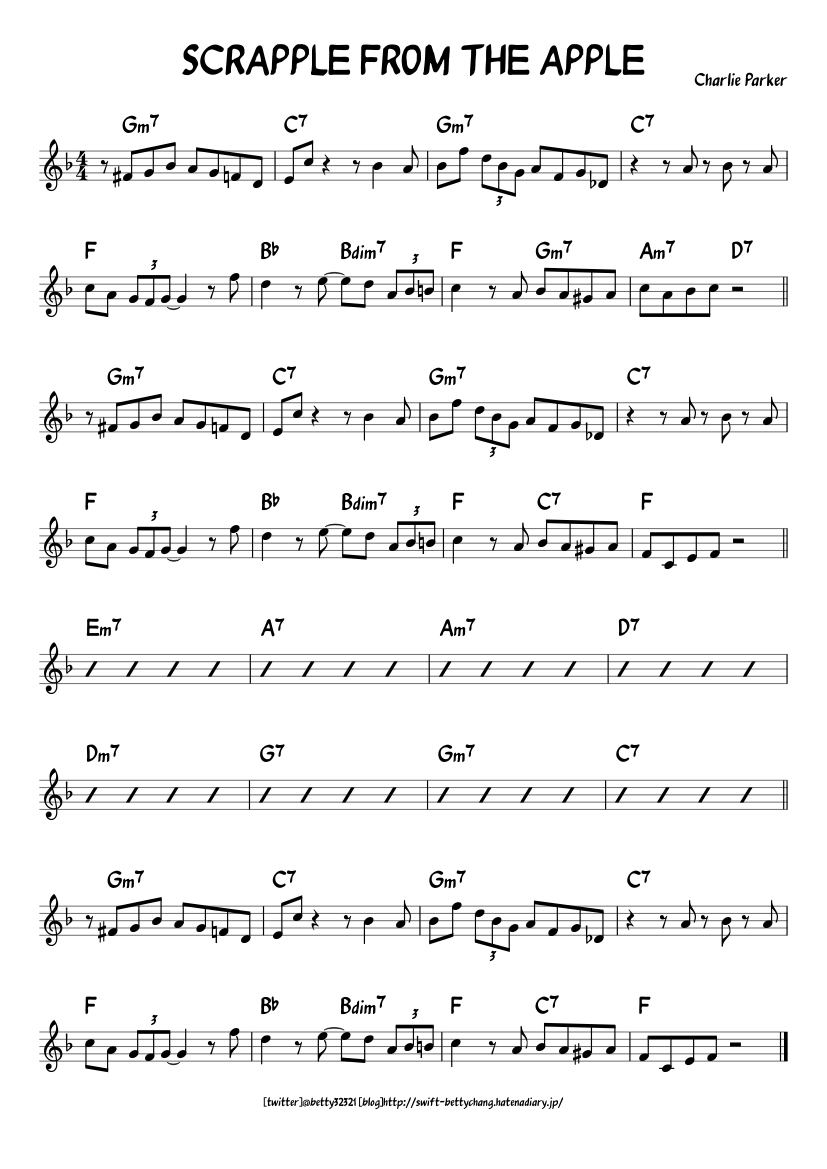Reading Changes in Real Time
The ability to read chord changes in real time allows you to follow along with a song and understand how the harmonic backdrop changes.
Reading Changes
Let's break down what reading changes even is. Lets say someone puts this in front of us:

The changes are the chord symbols that reside above the stave and reading them in real time means that we set a metronome and following the chord changes throughout the song.
How
The first thing is to figure out what they key is, since one flat is 5* major we can set this as our anchor note.
Recall back to when we talked about how to read chord symbols, that skill is about to become incredibly useful.
When we start the song we'll already know what the first chord is, so when the first beat happens we play our chord, now halfway through that measure we should start thinking about what our next chord is and get that ready in our mind.
So the way we get a chord ready is that we determine what it is in anchor intervals, that way we can then use that information on the fretboard.
We do this throughout the song and realizing that when there is more than one chord in a bar that we'll have to be a little quicker.
Other than that we just continue this process looping the song however many times we want.
Real Time
The request of real time just means that the speed at which the reading is done should be at the tempo that the song is written at or faster.
So let's say we have our tempo at 100BPM, then one beat is 100/60 = 1.666 seconds long so 4 beats (one measure) is 6.66 seconds long. We're using half a bar to prepare our chords, so we need to be able to prepare our chord in 3.33 seconds.
So therefore real time is just the request that we are able to read chords really fast, so let's talk about how we can actually get fast at this.
The main thing to do is to use the method described in "reading chord symbols efficiently" and to practice it a lot.
Since the process is not memorization based then you will find that you have to think a lot to produce the anchored intervals, but over time they will come more naturally since you've reapeated it so many times, this is indirect memorization, where you're constructing them (not memorizing) but over time you remember what the result is so you can simply jump straight to it.
The reason for constructing instead of memorizing is that it allows you to deal with less common chords easily, and if you ever forget a chord you can easily remember it.